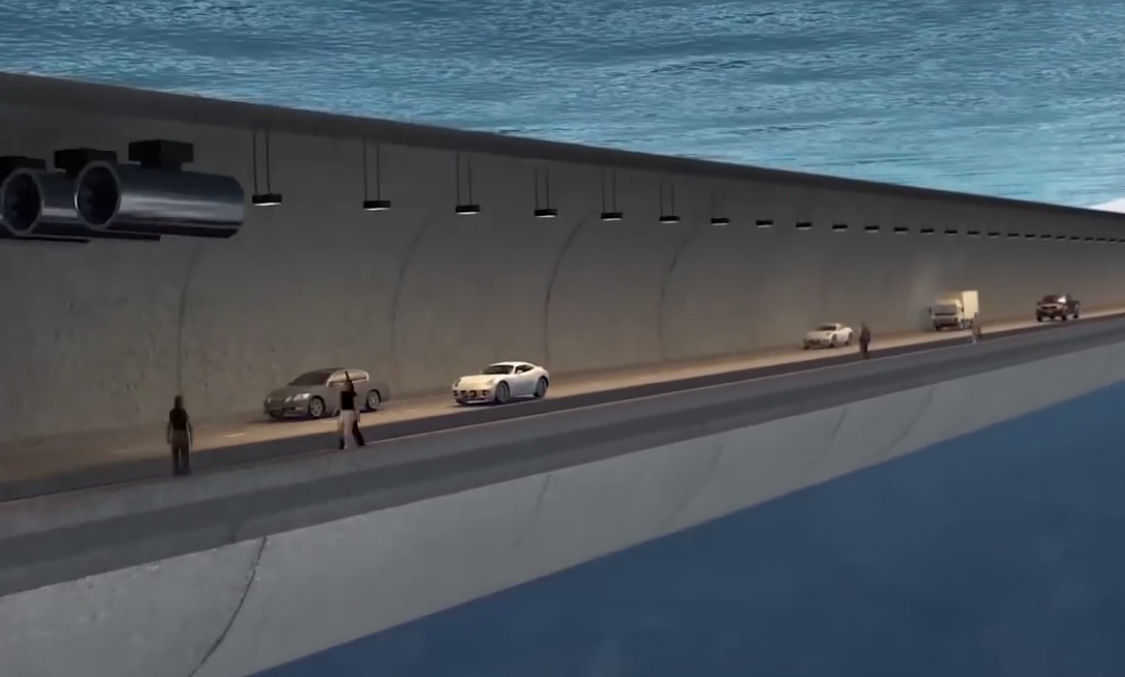To get to the touristy Chinese island of Hainan from the mainland, you have to cross the 30 kilometre wide and 120 metre deep Qiongzhou Strait, which is not for the faint-hearted. The area is prone to strong typhoons. An underwater tunnel could be the answer, Delft researchers believe.
Screenshot from a video depicting the Underwater Floating Tunnel that Norway wants to build. (Image: Vocativ)
Deep beneath the waves all is quiet. The Chinese engineering and construction company CCCC (China Communications Construction Co.) is therefore cooking up a plan to develop submerged floating tunnels to cross sea passages like the Qiongzhou Strait. And it has asked TU Delft researchers to be part of the project.
Submerged floating tubes allow the construction of tunnels in extremely deep water where conventional bridges or tunnels are technically difficult to build or prohibitively expensive. Depending on the buoyancy of the tunnels, cables anchored to the sea bed or to pontoons at the surface would prevent them from floating to the surface or submerging, respectively.
A submerged floating tunnel has never been built before
“We are getting this project started,” says Prof. Bas Jonkman, Head of the Hydraulic Structures and Flood Risk section of TU Delft Faculty of Civil Engineering and Geosciences, adding that more Dutch engineers such as engineers from the company TEC (Tunnel Engineering Consultants) are also involved.
“We just signed the contracts and we are waiting for the Chinese to do the same. We will be hiring two PhD students, part of whose task is to look into the risk analyses. In the meantime, we already have bachelor students performing experiments with possible prototypes in our labs in Delft.”
Vulnerable
There are many risks to be considered. The tunnel should be able to cope with seismic disturbances and weather events easily since it will have some degree of freedom of movement. But it is vulnerable to ship anchors, submarines, and undersea currents, to name a few.
“The idea is to place the tube underwater, deep enough to avoid water traffic and weather, but not that deep that we need to deal with high water pressure,” says Jonkman. “As a general rule of thumb, you can say that there is potential for floating tubes instead of tunnels on the sea floor for depths of 50 metres or more.”
But this is just theory. Though many countries have shown interest, namely Norway with its very deep fjords, a submerged floating tunnel has never been built before.
The concept of submerged floating tunnels is based on well-known technology applied to floating bridges and offshore structures, but the construction is mostly similar to that of immersed tunnels. One way is to build the tube in sections in a dry dock, then float them to the construction site and sink them in place while sealed. Once the sections are fixed to each other, the seals are broken. Another option is to build the sections unsealed and, after welding them together, pump the water out.
Jonkman believes a submerged floating tunnel could also link the Netherlands with a yet to be built airport at sea, especially if the airport island is to be constructed in the deeper parts of the North Sea. The Dutch Parliament has requested a study into the feasibility of a new airport on an artificial island in the North Sea.
Do you have a question or comment about this article?
tomas.vandijk@tudelft.nl


Comments are closed.